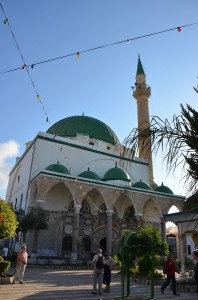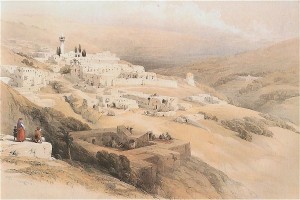Christian Sites
Baniyas/Caesarea Philippi
Now when Jesus came into the district of Caesarea Philippi, He was asking His disciples, “Who do people say that the Son of Man is?” Simon Peter answered, “You are the Christ, the Son of the living God.” And Jesus said to him, “Blessed are you, Simon Barjona, because flesh and blood did not reveal this to you, but My Father who is in heaven. “I also say to you that you are Peter, and upon this rock I will build My church.…“I will give you the keys of the kingdom of heaven”.
Matthew Chapter 16
Caesarea Philippi later came to be known as Baniyas, an Arabic corruption of the Greek word Panias, a place named after the Greek God Pan who was worshiped here over 2,000 years ago. Today we celebrate the place for two reasons: it’s life giving waters, a source of the Jordan River, and the place where Saint Peter comes to prominence in the Gospels, declaring that Jesus was the Christ.
Tel Aviv
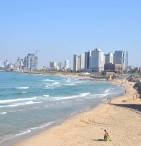
There’s a joke we like to tell. If you have just two days to spend in Israel, spend one in the holy city of Jerusalem and one taking in the unencumbered vistas of the Galilee, its lake and the Golan. But if you have three days here, forget all of that, and spend all of your time in Tel Aviv.
Tel Aviv, founded on sand dunes by 66 pioneering Jewish families in 1909 is Israels commercial and artistic capital, a place where every young Israeli yearns to live. A liberal city with miles of white sandy beaches and culture to match, this is the place for a Mediterranean vacation!
Old Jaffa
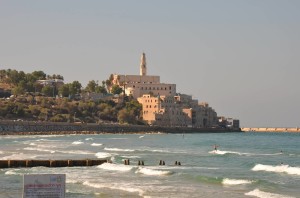 The port of Jaffa dates back thousands of years, and it served as the escape route in the biblical story of Jonah and the whale as Jonah tried to evade God’s command for him to preach repentance to the inhabitants of Ninveh. For millennia Jaffa was the traditional entry point to the Land of Israel and the holy city of Jerusalem. Today one can visit the hilltop overlooking the Sea and note evidence of Greek, Roman, Arab and European civilizations before walking the town’s alleys and visiting its artist colony.
The port of Jaffa dates back thousands of years, and it served as the escape route in the biblical story of Jonah and the whale as Jonah tried to evade God’s command for him to preach repentance to the inhabitants of Ninveh. For millennia Jaffa was the traditional entry point to the Land of Israel and the holy city of Jerusalem. Today one can visit the hilltop overlooking the Sea and note evidence of Greek, Roman, Arab and European civilizations before walking the town’s alleys and visiting its artist colony.
Acre
Traditionally Acre was the important town in Israel’s north. It was a critical life-line to Europe for the Crusaders in the Middle Ages. Recently discovered Crusader remains are a highlight of the trip to Acre where we’ll explore secret passages, the Knight’s Halls, the Arab market and the port area.
Capernum
Capernum is the place to come when you want to see how cultures borrow from each other. It’s a confusing place. Forunately we can make some sense of it while we sit in the shade under the large shade-giving trees that grow next to the sites ancient synagogue.
Back in the days of Jesus this place was a mid-sized fishing town of some 1500 people. Certainly large enough to merit having it’s own synagogue. In that time synagogues were used as places of congregation by the community, places to learn and make decisions. A couple of generations later, after the destruction of the great Temple in Jerusalem they would begin to function as places of worship to the God of Israel, since the option of making pilgrimage to the Temple was no longer a possibility.
Here look at how the Jews of the Byzantine era decorated their synagogue, what evoked their pride. When we enter the synagogue do we feel like we’ve been in this type of building before? Even if we’ve never been in a synagogue before, it seems familiar to us. Why?
We pass by the remnants of original neighborhoods from 2000 years ago and arrive at the original home of St. Peter, where Jesus lived during his ministry. It sits under the modern church. Consider this small space and learn about why it had to be so small, then how it was enlarged.
Before leaving look at the statue of St. Peter and try to identify the symbols that confirm for us that the figure is indeed Peter.
Mt. of Beatitudes
The Beatitudes (blessings) were taught by Jesus and, according to St. Augustine, are the basis of Western civilization.
Here the inspiring Italian architect, Antonio Barluzzi, designed a simple yet meaningful church, set amidst one of the most beautiful sites in the country. The views here take in the entire Sea of Galilee, and the hills of the lower Galilee and Golan Heights which surround the lake. Closer at hand we view orchards. As we walk about the grounds we spy shaded areas suitable for contemplation or groups celebrating the mass. Call the church in advance to make a reservation at one of the sites for your group.
The site of the church is itself ahistorical, simply the place, near the lake, where the Franciscans were able to purchase land to celebrate the Sermon on the Mount. Nevertheless it is in close proximity to a site, just down the hill, celebrated by the early Byzantine Christians as the place where Jesus did deliver the sermon. However we now understand that Jesus would have delivered the same ideas presented in the famous sermon many times during his ministry in Galilee. Perhaps on the particular occasion of the delivery on a high spot above the lake the ideas were best received and remembered associated with that place.
Tabgha (Miracle of the Multiplication of the Loaves and Fishes)
Often, when we approach the northwestern corner of the Sea of Galilee, the so-called Christian Quarter of the lake, it is here at the Church of the Miracle of the Multiplication that we make our first stop celebrating the ministry of Jesus. The church is modern and small but it evokes the feeling of a much older Byzantine-era church over which it is built and which it is designed to emulate. Stop outside the church in its atrium, where fish swim in a small pond, and contemplate the purpose of this space, just outside the church itself. Inside the church view the original Byzantine-era mosaics and, once you identify their theme, ask yourselves why in this case they were used to represent the theme of this church.
After some time here, take a walk outside to the main road and turn right. Less than five minutes away you’ll arrive the second site of Tabgha, the Church of Peter’s Primacy. Here you’ll be able to walk right down to the water’s edge, a highlight of any tour in the Galilee.
Cana Wedding Church
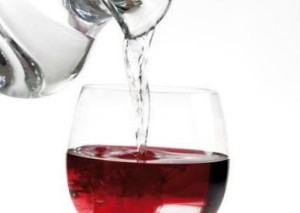 Obviously we at WaterandWineTours like the imagery and metaphors associated with this town and the events portrayed here in the New Testament.
Obviously we at WaterandWineTours like the imagery and metaphors associated with this town and the events portrayed here in the New Testament.
In Cana, the New Testament tells us, Jesus performed his first public miracle. Despite initial reservations about revealing his powers at an inappropriate time, Jesus ultimately fulfills the fifth commandment to give respect to his parents, by fulfilling his mother Mary’s will. Today we can buy Cana Wedding Wine in the bustling town’s main street or on the smaller side street leading to the Churches which celebrate the event. Some couples come to Cana to renew their wedding vows.
Nazareth
Philip found Nathanael and told him, “We have found the one Moses wrote about in the Law, and about whom the prophets also wrote—Jesus of Nazareth, the son of Joseph.” “Nazareth! Can anything good come from there?” Nathanael asked. “Come and see,” said Philip.
John 1:45-46
In the time of Jesus, scholars believe that Nazareth was a poor Galilean village numbering about 400 souls. The people lived in caves, a mark of their poverty. The women folk, following the time-immemorial custom in the Middle East, would gather water at the town spring, situated several hundred meters from the towns cave dwellings.
A hundred years ago Nazareth had 7,000 residents. But today it is the largest Arab town in Israel, with a population of greater than 72,000.
Yardenit (Jordan River Baptism Site)
The Jordan River gives life to its surrounding population. The name in Hebrew is Yarden. It’s sound is so pleasing that many of us name out children (both boys and girls) after it. It evokes feelings of life and beauty. It represents beginnings. The Israelites cross through its dry river bed into their long-promised home (Joshua 3:16-17). The story of Jesus begins in the river in the Gospel of Matthew (1:9).
When we arrive here at the southern side of the Sea of Galilee we are witnessing the beginning of the “lower” Jordan river. From here, the stream will meander at a painfully slow rate south. As it travels it eventually demarcates the border between the modern states of Jordan and Israel. Then it demarcates the border between the West Bank and the state of Jordan. Finally it flows into the Dead Sea. Along the way we pass several significant events from Biblical history including the crossing of the Jordan by the Children of Israel (Joshua 3:1-4:24) at Gilgal.
Where did John the Baptist baptize Jesus? Somewhere along this course of river. Near the Sea of Galilee or near the Dead Sea? Scholars will disagree. Some even believe it too place north of the Sea of Galilee along the Upper Jordan River. Nevertheless the members of Kibbutz Kinerret, the second kibbutz in the history of the modern Jewish settlement of the land of Israel, have established an excellent site for Christians who wish to be baptized again. Christian doctrine differs regarding the appropriateness of this action. Catholics remain opposed to a second baptism after the initial one taking place in childhood but other streams of the faith advocate for it. What cannot be denied is the powerful emotional and spiritual significance of the baptisms which take place here every day and which are a highlight of a stop here.
The Muhraka
“Elijah approached the people and said, ‘How long will you not decide between two choices? If the Lord is the true God, follow him, but if Baal is the true God, follow him!'”
1 Kings 18:21
Genesis records the first known monotheist in history, the Patriarch Abraham. He dwelt here when the land was called Canaan. A thousand years later the land came to be named after Abraham’s grandson Israel. At this time the prophet Elijah was sent to warn Abraham’s descendants to be true to the one God of Israel.
Abraham was a pastoralist, shepherding his flocks and herds across the land in search of good pasture. But his descendants, a couple hundred years removed from slavery in Egypt and the trek through the Wilderness of Sinai had settled down to work the land. Observation of their pagan neighbors sacrificing to the local deity named Baal began to give the Israelites ideas. Farming was hard work and there were never any guarantees. Sudden storms in the Spring, droughts, heat waves could all destroy a season’s crop. So why not take out an insurance policy in the form of a sacrifice to your neighbor’s God? Perhaps it could help? How could it hurt matters? It was into this ambiguous, muddled scenario that Elijah the Prophet approached the assembled Israelites with absolute and complete faith in the idea of the one God, the God of Israel. We understand by this story that even 1000 years after the idea of monotheism is introduced into history not all of the people’s of the Earth are convinced of the existence of only one God, serving a small nation apart.
Bethlehem
Just a ten minute drive from Jerusalem’s Holy Basin, where Jesus’ Passion occurred, Bethlehem is a must-see for the Christian Pilgrim. The main focus in Bethlehem is the Church of the Nativity, the place of Jesus’ birth. But for a pilgrim with more time, Bethlehem offers other sites as well, including the Sheperd’s Field.
How to put together your Water and Wine tour of Israel
On our Water and Wine Tours website you will not find standard tours.
Don’t worry. We’ll make sure that you experience the must-see sites in the country. But we’ve also included a comprehensive list of sites, by region for people with many different interests, with enough description for you to ascertain whether it’s the sort of place you want to spend your time.
You know your budget and how much time you have to spend here.
So here are our recommendations, based on years of leading all sorts of tours throughout the country.
- Ask yourself if this trip is a vacation. Do you want to see sites but also feel really relaxed at the end of each day? So that you don’t need a few days of sleep upon your return home? If this is the case then try to restrict yourself to three major sites per day. Between the sites, travel and lunch 8-10 hours will pass quickly.
- If you’re more inclined to describe yourself as a pilgrim or someone who wants a survey of sites, then expect to visit up to five sites per day. You’ll be spiritually satisfied but you’ll also need to get a good night’s sleep every night.
“A life changing event”
"Our guide, Zach Levin, made the trip a life changing event for both Linda and me. He was very sensitive to our needs and went out of his way to make sure we got the full Israeli experience. Zach is very knowledgeable and his passion and enthusiasm contributed to our getting the full flavor of the country."
Harvey and Linda W
Your Tour Guide
Water & Wine Tours specializes in individually tailored tours catering to the interests of its clients. Our founder, Zach Levin, is an experienced, licensed tour guide who majored in Middle Eastern Languages and Cultures at Columbia University in the City of New York.
Our tour guides make the history and culture of Israel come alive. They understand that the customer is always right and want you to experience an unforgettable Israel. We’ll take you to places which you’ll love and never forget. When you need to be left alone we’ll sense it. When you need an extra hand we’re there for you.

